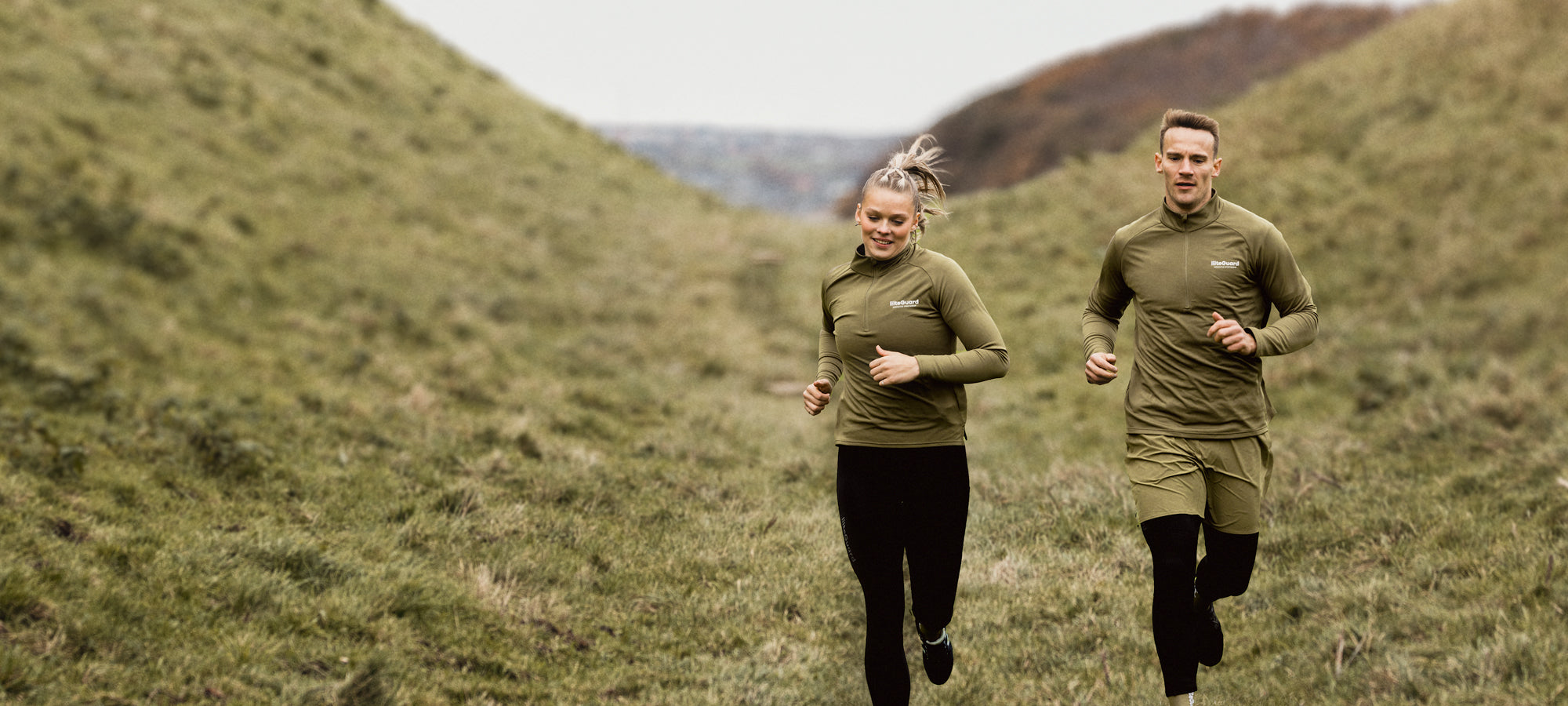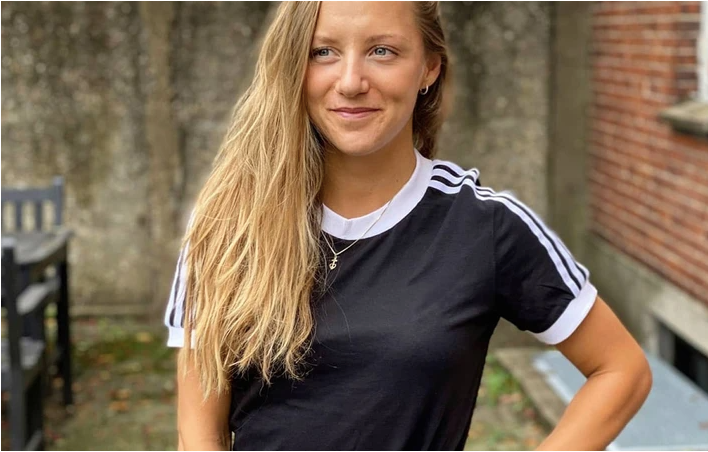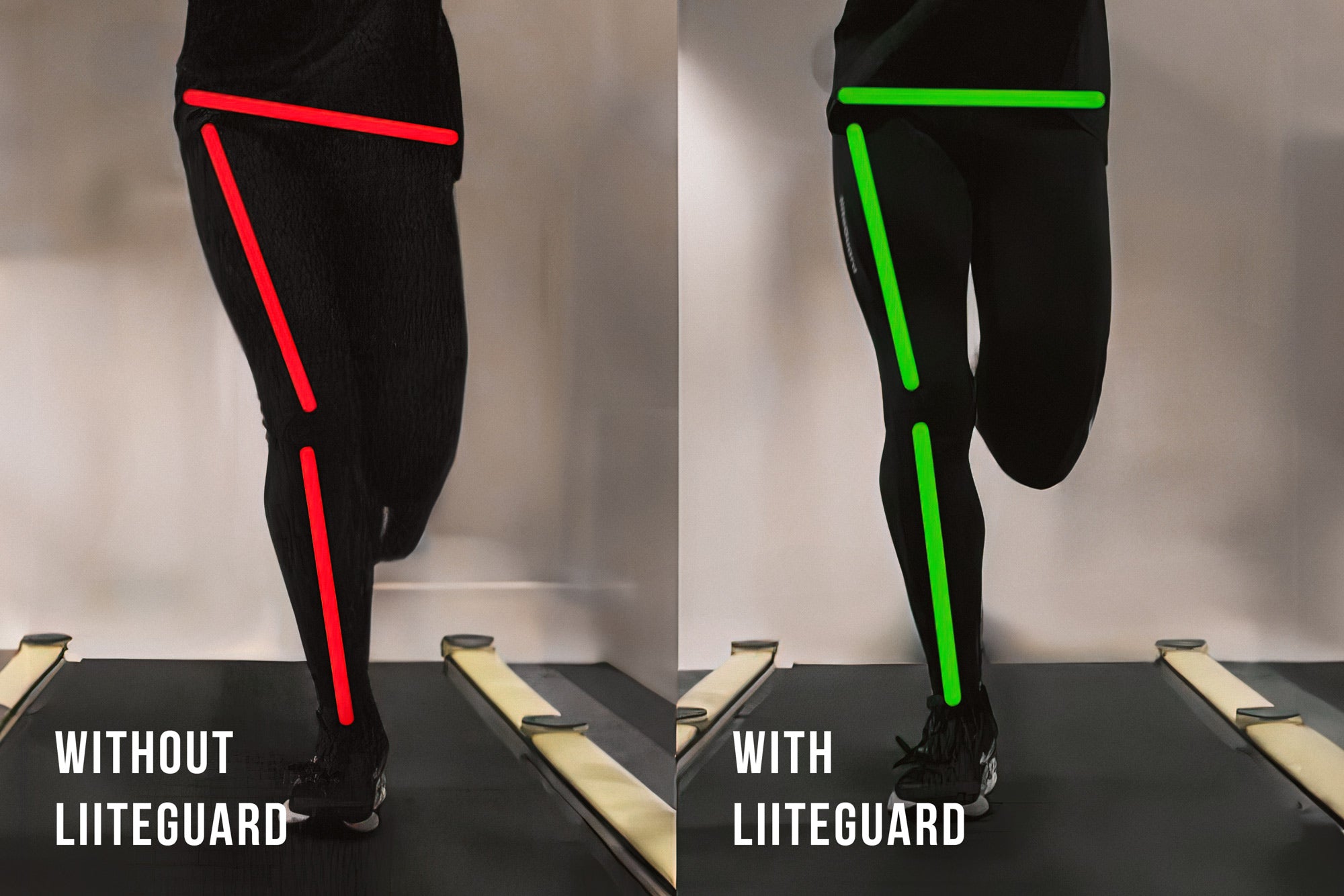
Temperature regulation during physical activity in the heat
Summer is upon us and although the summer can be a mixed pleasure in terms of weather, you can often experience that your training takes place in warmer surroundings than usual - no matter if you are training inside or outside. We've probably all tried going for a run in the summer heat, or working out in a gym, where you feel that due to the heat you're sweating even before you get started. It seems completely natural to us to sweat when we exercise, and also that we sweat more when it's hot - but have you given any thoughts about the consequences the increased temperature can have on your body and your performance?
In this blog, I will try to explain what happens when you exercise and the body gets warm, and the sweat starts to drip. I will explain why we sweat, what you should pay attention to when training in the heat, as well as what you can do yourself to get the best training experience when the temperature rises.
The normal and ideal body temperature
When talking about the body temperature, also known as the core temperature, it should optimally always be around 37 degrees, as it is at this temperature the body functions most optimally.
The reason it is called the core temperature is that it is the temperature inside the body; at the core that is important. At the core of the body we have our organs, and optimal functioning of the organs is vital for us to stay healthy and fit.
The core temperature can naturally fluctuate between 36.5-37.5 degrees celcius, without anything is potentially wrong, but if the temperature falls or rises outside this range, it could potentially become a problem. This is known as hypothermia (the core temperature falls below 36.5 degrees celcius) or hyperthermia (the core temperature rises above 37.5 degrees celcius).
We have all probably experienced hyperthermia several times when we have been sick with fever, where the core temperature exceeds 37 degrees celcius due to illness in the body, while hypothermia will most often be due to staying in extreme cold conditions for a period of time.
When the body is in a state of hypo or hyperthermia, the body does not function optimally, and there is a risk of serious damage to the body, depending on the degree of hypo/hyperthermia, as well as how long one is in this state. In the worst case, hypo or hyperthermia can be life-threatening and have fatal consequences.
Although the change in core temperature must deviate a lot from the optimal 37 degrees celcius before it is potentially harmful and life-threatening, the temperature must not deviate much before the body's functions are negatively affected. If the body is in a temperature of around 40 degrees celcius for a long time, one will often develop some kind of symptoms. A well-known example is febrile delirium, where one's personality can briefly change character due to the fever.
How can the body regulate temperature
The body has 4 ways to regulate the core temperature, in order to maintain the optimal 37 degrees, where the organs and thus the body in general have the best working conditions. In all 4 methods, our outer layer plays; the skin plays an important role, as it is through the skin we can control and regulate the temperature inside us.
1. Conduction
This regulation takes place through the skin's contact with a surface that can either absorb or release heat. This requires that there is a temperature difference between the skin and the surface.
If the skin is warm and the surface cold, then the body will release heat to the surface and vice versa if the skin is colder than the surface. A well-known example is the cold cloth we probably all tried being put on our foreheads as children when we had a fever.
2. Radiation
This regulation again takes place via the skin, but now it takes place through the surroundings in general and not by touching. The best example is if we find ourselves in either the sun or the shade on a hot summer day. In the sun, the surroundings are warmer due to the sun rays, which make us feel warmer, while we can experience that it is cooler in the shade, where the surroundings are colder due to the absence of the sun.
3. Convection
This regulation takes place via the air close to the skin. Again, there must be a temperature difference between skin and air for regulation to occur. If the air is colder than your body, the body will cool down, while the body will heat up if the air is warmer. An example is the difference between running on a hot summer day with no wind, and running on a day with a light breeze. Here, the light breeze means that you do not experience the heat in the same way, as the body's temperature is to some extent regulated by the cold wind against the skin.
4. Evaporation of sweat through the skin
This is the most important form of regulation, and the most interesting when it comes to heat regulation when doing physical activity, as it is this the body will always resort to if sufficient regulation cannot take place via the other methods - and during physical activity is this always our most important method of regulating the bodytemperature.
This regulation occurs by fluid being transported to the skin via the bloodstream. When the liquid penetrates the skin, it evaporates and disappears. The liquid that comes out through the skin and evaporates is what we all know as sweat.
This evaporation process requires energy and heat and this heat consumption causes the heat to be removed from the body - we use the body's heat to make the sweat evaporate. When the sweat has evaporated and the heat has been used up, this results is in the blood in the skin being cooled down, and the cooled blood can be transported to the rest of the body including the core, whereby the core temperature is regulated and kept around the optimal 37 degrees celcius.
It is of course extremely clever and positive that we ourselves can regulate our body temperature during physical activity, but as mentioned, the described evaporation process requires energy. This means that your body uses energy to regulate the temperature. The warmer the body is, the more it has to regulate body temperature through the evaporation of sweat and the more energy it consumes.
This is the reason why we often feel that in the heat we cannot perform in the same way we usually do when we exercise, as we get tired more rapidly and the activity feels harder than usual. Our body simply uses more energy to regulate body temperature, and we lack that energy in the performance of the activity. Physical activity in higher temperatures will therefore result in poorer performance.
What can I do to have the best training experience in the heat?

The best advice is of course to avoid the heat when you train, and on a hot summer day you should not train when the sun is at its peak, but either train early or late in the day and preferably in the shade if possible.
It is not always an option if the race you have signed up for is at 3pm and takes place in 28 degree heat, or if the gym is hot due to the warmth outside.
In these cases I would recommend that you pay attention to the following:
Pay attention to your fluid balance
When you exercise in the heat, you sweat more than usual. It is important that you have enough fluid and get extra fluid along the way, as you will lose fluid in your body due to increased sweating. Dehydration can become a huge problem if you start to become dehydrated. This can lead to heat exhaustion and ultimately heatstroke, which can be very serious.
If you know in advance that you will be training in the heat, it is a good idea to prepare for it before you exercise. Try to drink a glass of water with each meal of the day, as well as a glass just before you leave.
If you have to train for a longer period of time, make sure you have fluids with you and drink along the way. If your training period exceeds just one hour in the heat, you should bring fluids, as you will lose enough fluid through sweat that you will need to replenish along the way to avoid a negative impact on your performance.
You don't have to drink a lot, but preferably frequently. Just a few mouthfuls when thirst sets in should be enough to keep you hydrated without the uncomfortable feeling in your stomach when you drink too much.
If you have to train several times on the same day or several days in a row, use the breaks between training sessions to refill your fluid stores.
Choose the right clothes for your workout
 It goes without saying that our core temperature depends on what we do, in what climate we do it, as well as our clothing. None of us would choose to wear winther tights and a long sleeve shirt when we go for a run on a hot summer day, as we are well aware that it will be too hot. We always dress to the occation, so the clothing is appropriate in relation to the activity we have to perform. and the context in which it must take place.
It goes without saying that our core temperature depends on what we do, in what climate we do it, as well as our clothing. None of us would choose to wear winther tights and a long sleeve shirt when we go for a run on a hot summer day, as we are well aware that it will be too hot. We always dress to the occation, so the clothing is appropriate in relation to the activity we have to perform. and the context in which it must take place.
But did you know that the material in our clothing also has a big impact on how we can regulate bodytemperature during exercise in the heat?
We probably all tried to ride a bike in the rain wearing a rain jacket. Here, despite the cold and rain, you can experience profuse sweating and be soaked from sweat afterwards. The reason for this is that the rain jacket is designed to keep the rain out, but not transport the liquid, i.e. sweat away from the body. This is why we experience being terribly hot and sweating a lot although it is cold and rainy, as there is no breathability and wicking ability in the material. We sweat more, as the body cannot get rid of the heat via evaporation through the skin, and the body does not cool down, as the evaporation does not take place, and this leads to even further increased sweat production since the body tries to even harder to regulate the temperature.
Another example is cotton, which, in addition to being very comfortable, also has good thermal properties. However, the disadvantage of cotton is that sweat transport in cotton fibers is very poor. Instead of conducting the liquid through the fibers, they are absorbed into the fibers and only very slowly disappear towards the surface and causing the evaporation to be very restricted and slow.
The right choice of material in your clothing is thus important when it comes to heat regulation, as in addition to comfort, it is also decisive for how optimally you can regulate heat, as well as the degree of energy you spend on it. The easier it is for the sweat to reach the surface, the faster it will be able to evaporate and thereby cool the body.
If your clothing can provide the optimal opportunities to regulate heat, you will have less energy consumption for regulation and thereby more energy for your performance. A garment with the most optimal wicking properties will therefore be able to give you faster and more efficient heat regulation, thereby requiring less energy loss for heat regulation, as well as reducing the risk of heat exhaustion.
When you train, you always want to have the best experience, regardless of whether it is about your performance, the social aspect or something else entirely. Regardless of what drives you and gets you going, I hope that this post has given you some knowledge and some good advice that will help you to have the best experience when you exercise in the heat.
Have a great summer and enjoy your training :)





Leave a comment
This site is protected by reCAPTCHA and the Google Privacy Policy and Terms of Service apply.